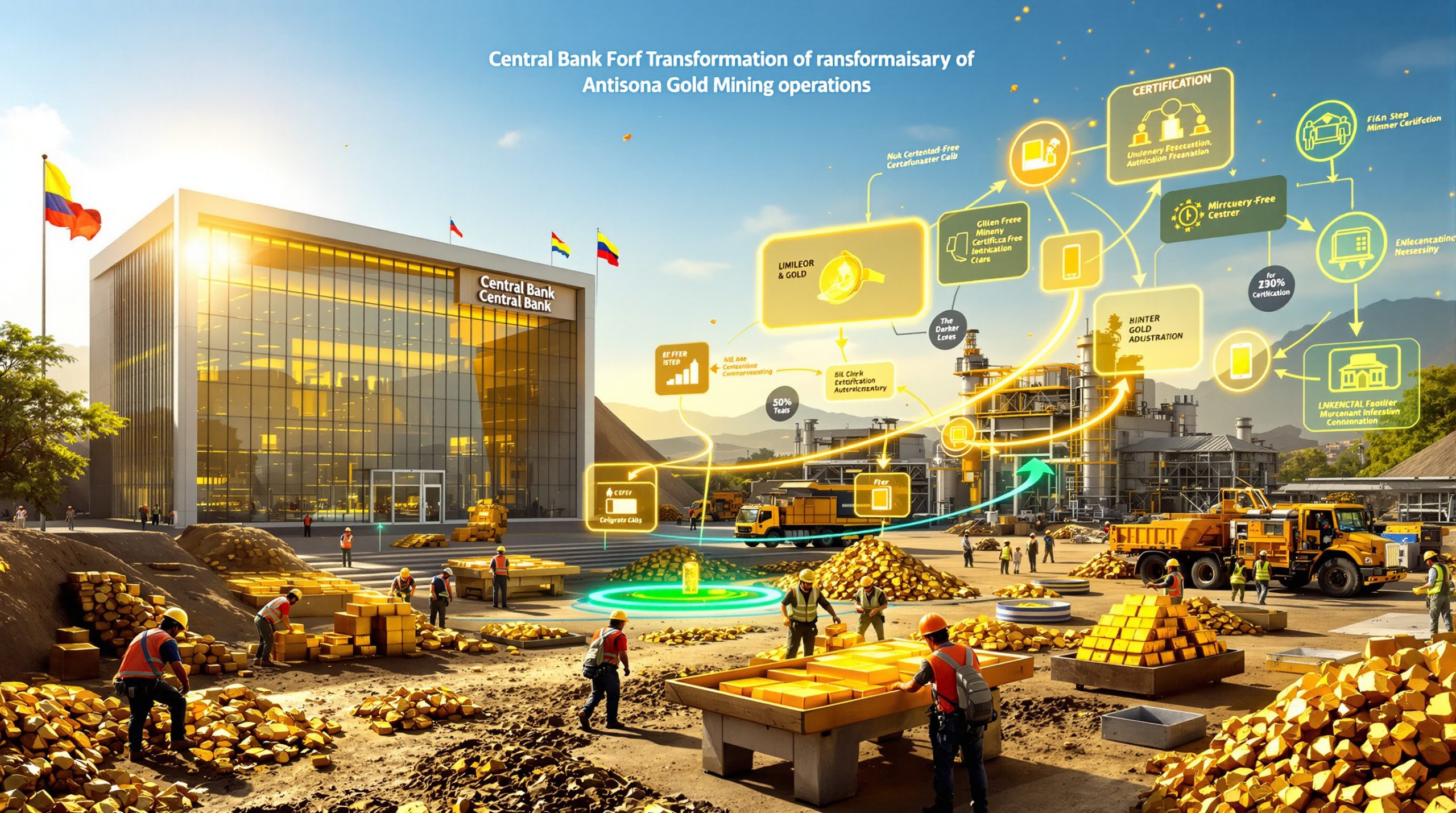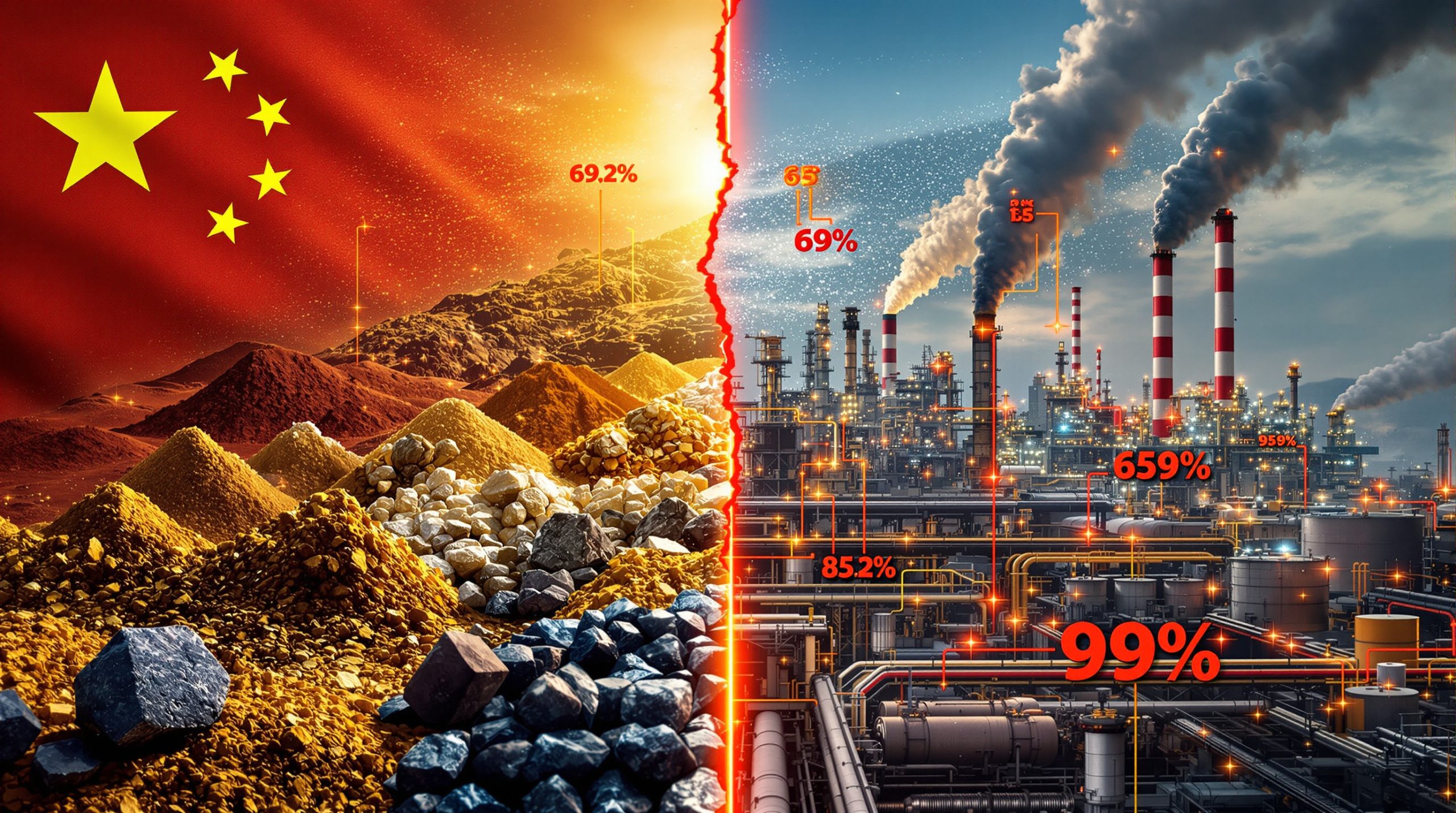Iron ore 65% Fe Brazil-origin fines represent the premium tier of seaborne iron ore markets, distinguished by their exceptional quality parameters and consistent chemical composition. These high-grade materials command significant price premiums due to their superior steelmaking properties and environmental benefits compared to standard grade alternatives. Furthermore, the recent iron ore price trends demonstrate increasing demand for premium grades as steel producers optimise efficiency.
Table: Key Quality Parameters for 65% Fe Brazilian Fines
| Parameter | Base Specification | Acceptable Range |
|---|---|---|
| Iron Content | 65% Fe | 63.5% – 66% |
| Silica (SiO₂) | 2.7% | 2.2% – 3.3% |
| Alumina (Al₂O₃) | 1.4% | 1.0% – 1.8% |
| Phosphorus | 0.075% | Maximum |
| Moisture | 9% | Base level |
| Granularity | 90% < 10mm | < 30% < 0.15mm |
The technical specifications established by major pricing agencies reflect real market conditions rather than theoretical ideals. Recent adjustments to silica content parameters demonstrate how quality standards evolve to match actual ore characteristics delivered to steel mills. The base silica specification increase from 2.2% to 2.7% in November 2025 exemplifies this market alignment approach, ensuring price indices accurately reflect traded material quality.
Brazil's Geological Advantage in Premium Ore Production
Brazilian iron ore deposits, particularly those in the southeastern mining regions, produce naturally high-grade materials through geological processes spanning millions of years. The concentration of iron oxides in these formations creates ore bodies with inherently superior quality compared to global alternatives.
The exclusive Brazil-origin specification for 65% Fe fines pricing indices, maintained since August 2013, reflects consistent quality differentiation in global markets. This longevity indicates fundamental geological advantages rather than temporary competitive positioning, supporting sustained premium pricing for Brazilian high-grade materials. Additionally, iron ore demand insights reveal how geographical advantages continue to drive market preferences.
Premium Pricing Structure Analysis
The pricing architecture for iron ore 65% Fe Brazil-origin fines operates through sophisticated assessment methodologies that capture both transaction data and market sentiment. Daily price discovery mechanisms incorporate bid-offer spreads alongside completed trades, providing forward-looking price signals rather than purely historical data.
Market assessments for high-grade Brazilian fines typically establish significant premiums over standard 62% Fe benchmarks, reflecting their enhanced value proposition for steel producers. The premium structure compensates for reduced ore requirements per tonne of steel output, energy efficiency gains, and environmental compliance benefits.
Specification Amendment Impact on Pricing
Quality parameter adjustments translate directly into measurable price effects through established technical frameworks. The November 2025 specification changes for 65% Fe fines generated a calculated differential of $0.21 per tonne, demonstrating the precision of commodity pricing mechanisms in accounting for quality variations.
This differential was computed using silica value-in-use methodologies rather than arbitrary adjustments, ensuring that price changes reflect actual steelmaking value rather than market sentiment. The mathematical approach protects derivative contract holders from sudden basis shifts while maintaining pricing accuracy.
Recent Market Developments in High-Grade Ore Pricing:
• Enhanced specification transparency through expanded quality parameter ranges
• Integration of real-world ore characteristics into pricing frameworks
• Consolidation of subsidiary indices into primary benchmarks for operational efficiency
• Improved derivative contract adjustment mechanisms for specification changes
Steelmaking Efficiency Benefits
High-grade Brazilian iron ore delivers measurable operational advantages for steel producers through multiple technical mechanisms. The elevated iron content reduces the mass of gangue material requiring thermal processing, directly improving blast furnace productivity and energy efficiency.
Steel mills utilising 65% Fe fines experience reduced coke consumption per tonne of pig iron produced, as less reductant is required to process the lower gangue content. This efficiency improvement translates into both cost savings and environmental benefits through reduced carbon emissions per unit of steel output.
Quantified Performance Improvements
The technical advantages of high-grade ore manifest in several measurable areas:
• Ore consumption reduction: Approximately 4-6% less ore required per tonne of steel produced
• Energy efficiency gains: Reduced thermal processing requirements for gangue material removal
• Emission intensity improvements: Lower CO₂ footprint through decreased fuel consumption
• Productivity enhancements: Higher blast furnace throughput due to reduced slag generation
These efficiency gains compound throughout the steelmaking process, creating value that justifies premium pricing for high-grade materials. The environmental benefits become particularly valuable as steel producers face increasing regulatory pressure to reduce carbon emissions.
Market Assessment Methodology
Fastmarkets' MB-IRO-0009 index serves as the primary pricing benchmark for iron ore 65% Fe Brazil-origin fines, establishing market-based price discovery through comprehensive data collection and analysis. The assessment methodology incorporates daily market transactions and bid-offer spreads to ensure pricing accuracy and market relevance.
The index specifications establish minimum cargo sizes of 30,000 tonnes with delivery windows of 2-10 weeks, reflecting realistic trading scenarios for Capesize vessel shipments from Brazil to Asia. Daily publication at 6:30pm Singapore time positions the assessment to capture Asian market sentiment whilst providing reference points for global trading.
Data Input and Validation Framework
Price discovery mechanisms rely on multiple data sources to ensure comprehensive market coverage:
• Transaction data: Completed trades for Brazil-origin 65% Fe fines meeting specification requirements
• Bid-offer spreads: Market participants' willingness to buy and sell at various price levels
• Market feedback: Industry input on trading conditions and quality parameters
• Technical analysis: Assessment of specification compliance and quality variations
The methodology emphasises forward-looking price discovery rather than purely historical transaction reporting, capturing market expectations and sentiment alongside executed trades.
Recent Specification Updates and Market Impact
The November 2025 specification amendments for iron ore 65% Fe Brazil-origin fines addressed the gap between theoretical quality parameters and actual market-traded materials. The three-month consultation period preceding these changes ensured comprehensive industry input and market validation.
The adjustment was designed to align with the specifications for high-grade sinter fines commonly traded in the CFR Qingdao market, improving index accuracy and market relevance.
The base silica content increase from 2.2% to 2.7% represents a 22.7% relative adjustment, reflecting natural geological variation in Brazilian ore deposits. Expanded ranges for both silica (2.2%-3.3%) and alumina (1.0%-1.8%) provide greater flexibility whilst maintaining steelmaking consistency.
Implementation Mechanics and Market Response
The specification changes required sophisticated adjustment mechanisms to protect derivative contract holders from sudden basis shifts. The calculated differential of $0.21 per tonne was based on high-grade iron ore silica value-in-use indices, ensuring technical accuracy in price adjustments.
Market response to the amendments demonstrated the importance of transparent specification management in commodity pricing. The elimination of subsidiary silica value-in-use indices following the base specification changes simplified the pricing architecture whilst maintaining assessment accuracy.
Geographic Distribution and Trade Flows
Brazilian iron ore 65% Fe fines primarily serve Asian steel markets, with China representing the dominant destination for high-grade ore shipments. The CFR Qingdao pricing basis reflects this trade pattern, incorporating freight costs and logistics considerations for the Brazil-to-China route.
The geographic concentration of demand creates specific market dynamics that differentiate high-grade ore trading from standard grade markets. Asian steel mills' preference for premium materials drives sustained demand for Brazilian 65% Fe fines despite higher acquisition costs.
Strategic Importance in Steel Supply Chains
High-grade Brazilian fines enable steel mills to optimise their raw material blending strategies, particularly during periods of high energy costs or stringent environmental regulations. The quality consistency of Brazil-origin materials provides operational predictability that justifies premium pricing.
Trade Flow Characteristics:
• Primary destination: Asian steel markets, particularly China
• Vessel requirements: Capesize carriers for economic transportation
• Transit time: Approximately 3-4 weeks from Brazilian ports to Qingdao
• Contract timing: 2-10 week delivery windows for pricing assessment
Netback Pricing Calculations
FOB Brazil pricing for iron ore 65% Fe fines derives from CFR China values through netback calculations that subtract transportation, insurance, and handling costs. Current freight rates between Brazil and China typically range from $18-25 per tonne, depending on vessel availability and seasonal demand variations.
The netback methodology accounts for all costs associated with ocean transportation, including fuel surcharges, port handling fees, and insurance premiums. These calculations provide Brazilian producers with pricing transparency for export planning and contract negotiations.
Moisture Content Adjustments
Standard pricing calculations incorporate moisture content adjustments to ensure fair value determination across different cargo characteristics. The 9% base moisture specification for 65% Fe fines requires specific handling in netback calculations compared to drier ore grades.
Moisture adjustments typically favour buyers when actual content exceeds base specifications, as higher water content reduces the delivered iron units per tonne of material purchased. These adjustments ensure pricing accuracy whilst maintaining market fairness.
Quality Control and Specification Compliance
Brazilian iron ore exporters implement comprehensive quality assurance protocols to ensure specification compliance for 65% Fe fines shipments. Independent inspection companies verify cargo quality at loading ports through rigorous sampling and testing procedures.
Laboratory analysis covers all specification parameters, with particular attention to iron content, silica, alumina, and phosphorus levels that directly affect steelmaking performance. Quality certification accompanies each shipment to provide buyers with assurance of specification compliance.
Specification Tolerance Management
The recently expanded tolerance ranges for silica (2.2%-3.3%) and alumina (1.0%-1.8%) reflect natural ore variation whilst maintaining steelmaking consistency. These ranges acknowledge geological realities whilst ensuring reliable furnace performance across different shipments.
Quality Assurance Framework:
• Sampling protocols: Representative cargo sampling at loading terminals
• Chemical analysis: Comprehensive testing of all specification parameters
• Independent verification: Third-party inspection company involvement
• Documentation: Quality certificates accompanying each shipment
Supply-Side Market Dynamics
Brazilian production capacity for iron ore 65% Fe fines remains constrained by geological limitations and infrastructure considerations. The concentration of high-grade ore deposits in specific mining regions creates natural supply limitations that support premium pricing structures.
Major Brazilian producers maintain significant influence over global high-grade ore markets through production decisions and maintenance scheduling. Supply disruptions from weather events, equipment maintenance, or logistics constraints can create substantial price volatility in premium ore markets. Consequently, rail infrastructure constraints continue to affect global supply chain dynamics.
Infrastructure and Capacity Constraints
Railway capacity and port handling limitations restrict Brazilian high-grade ore export volumes, creating structural supply constraints that differentiate these markets from bulk commodity trading. Infrastructure investments require substantial capital commitments with extended payback periods.
The specialised handling requirements for maintaining ore quality during transportation add complexity to supply chain management, supporting premium pricing for consistent quality delivery.
Demand Patterns from Global Steel Mills
Asian steel production cycles drive primary demand for Brazilian iron ore 65% Fe fines, with seasonal construction activity creating predictable demand patterns. Premium ore grades typically demonstrate lower volatility than standard grades due to their specialised applications and consistent user base.
Chinese steel mills' operational requirements for high-grade materials create sustained demand despite premium pricing, as the efficiency benefits justify higher raw material costs. Environmental regulations increasingly favour high-grade ore usage for emission reduction compliance. Furthermore, understanding market types and deposits helps predict regional demand variations.
Demand Characteristics by Region:
| Region | Demand Drivers | Market Share |
|---|---|---|
| China | Steel production efficiency | ~65% |
| Japan | Quality consistency requirements | ~15% |
| South Korea | Environmental compliance | ~10% |
| Other Asia | Mixed applications | ~10% |
Derivative Contract Markets and Risk Management
Singapore Exchange iron ore futures contracts settling against Fastmarkets' 65% Fe index provide essential hedging opportunities for physical traders and steel producers. Contract specifications mirror physical market parameters to ensure basis convergence at contract expiry.
Recent specification amendments required careful derivative contract adjustments to maintain hedging effectiveness whilst protecting market participants from unintended basis risk. The one-time differential mechanism demonstrated sophisticated risk management in commodity derivative markets.
Risk Management Applications
Steel mills utilise 65% Fe futures contracts to hedge premium ore purchases, protecting against adverse price movements whilst maintaining access to high-quality raw materials. The hedging effectiveness depends on close correlation between futures and physical market pricing.
Trading firms use derivative contracts to manage inventory risk and arbitrage opportunities between different ore grades and geographic markets. The liquidity and transparency of futures markets facilitate efficient risk transfer mechanisms.
Environmental Regulations and High-Grade Ore Demand
Increasing environmental standards in global steel production enhance demand for iron ore 65% Fe Brazil-origin fines through their superior emission reduction characteristics. Each tonne of high-grade ore processed generates fewer CO₂ emissions per unit of steel output compared to lower-grade alternatives.
Carbon pricing mechanisms and emission limits under development worldwide favour premium iron ore grades, potentially expanding price differentials between high-grade and standard products. This regulatory trend supports long-term demand growth for Brazilian 65% Fe fines.
Carbon Footprint Advantages
The environmental benefits of high-grade ore extend beyond direct emission reductions to include:
• Reduced energy consumption: Lower fuel requirements for ore processing
• Decreased waste generation: Less slag production per tonne of steel
• Improved resource efficiency: Higher iron yield per tonne of ore consumed
• Supply chain optimisation: Fewer ore shipments required for equivalent steel output
These environmental advantages align with global decarbonisation initiatives, supporting sustained demand for premium ore grades despite higher acquisition costs.
Investment Considerations and Market Outlook
Infrastructure development requirements for expanding Brazilian iron ore 65% Fe fines production involve substantial capital investments in mining, transportation, and port facilities. These infrastructure constraints support premium pricing sustainability whilst limiting rapid supply expansion.
Market outlook for high-grade iron ore remains favourable due to steel industry efficiency requirements and environmental compliance needs. However, potential supply increases from new Brazilian projects could moderate price premiums if infrastructure bottlenecks are resolved through major capital investments. For instance, the recent BHP strategic pivot demonstrates how major miners are repositioning for future demand.
Long-Term Market Trends
Several factors support sustained demand for iron ore 65% Fe Brazil-origin fines:
• Environmental regulations: Increasing carbon emission constraints favour high-grade ore
• Steel industry consolidation: Larger mills emphasise efficiency optimisation
• Infrastructure quality: Brazilian ore consistency supports operational reliability
• Supply limitations: Geological constraints limit high-grade ore availability globally
The combination of limited high-grade ore supply and increasing quality demands from steel producers creates a favourable outlook for sustained premium pricing, though investors should monitor infrastructure development and regulatory changes that could alter market dynamics.
Disclaimer: This analysis incorporates forward-looking statements and market projections that involve inherent uncertainties. Commodity markets are subject to significant volatility influenced by numerous factors including economic conditions, regulatory changes, and supply-demand imbalances. Investment decisions should consider comprehensive risk assessments and professional guidance.
Considering Opportunities in Australia's Iron Ore Sector?
Discovery Alert's proprietary Discovery IQ model delivers real-time alerts on significant iron ore and mineral discoveries across the ASX, instantly empowering subscribers to identify actionable opportunities ahead of the broader market. Understand why major mineral discoveries can lead to substantial market returns by exploring Discovery Alert's dedicated discoveries page, showcasing historic examples of exceptional outcomes, and begin your 30-day free trial today to position yourself ahead of the market.




